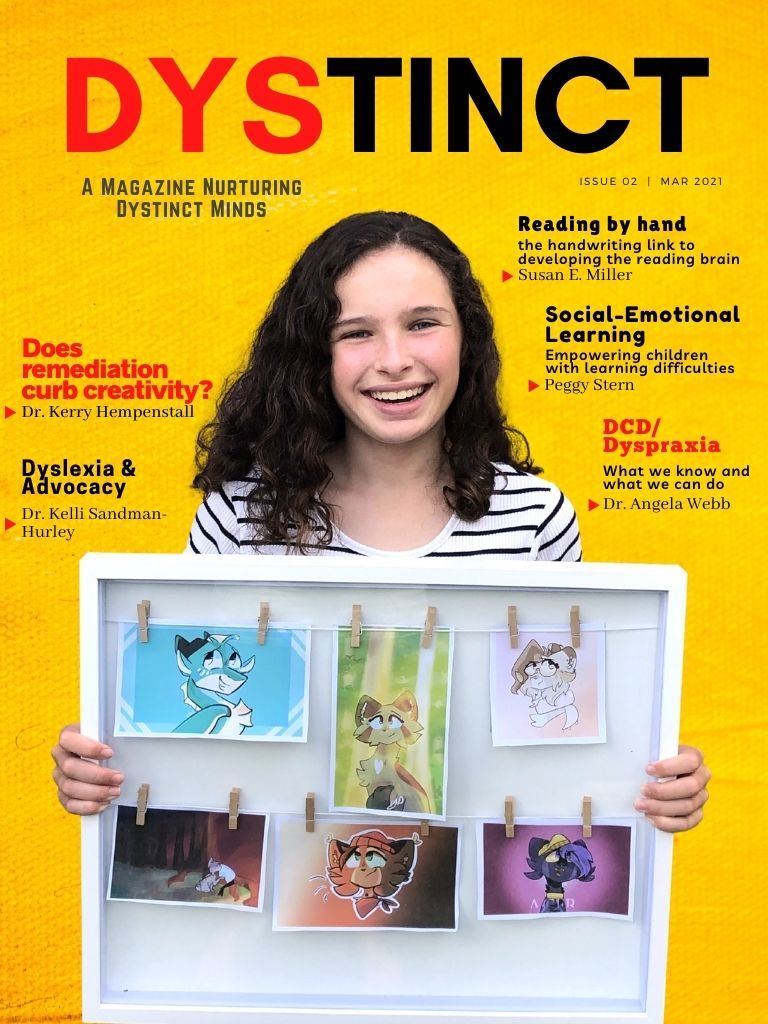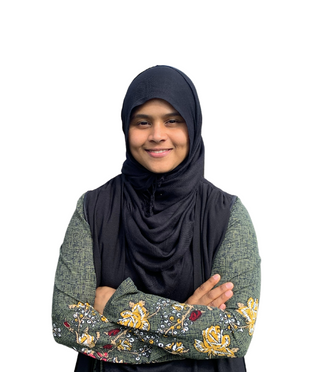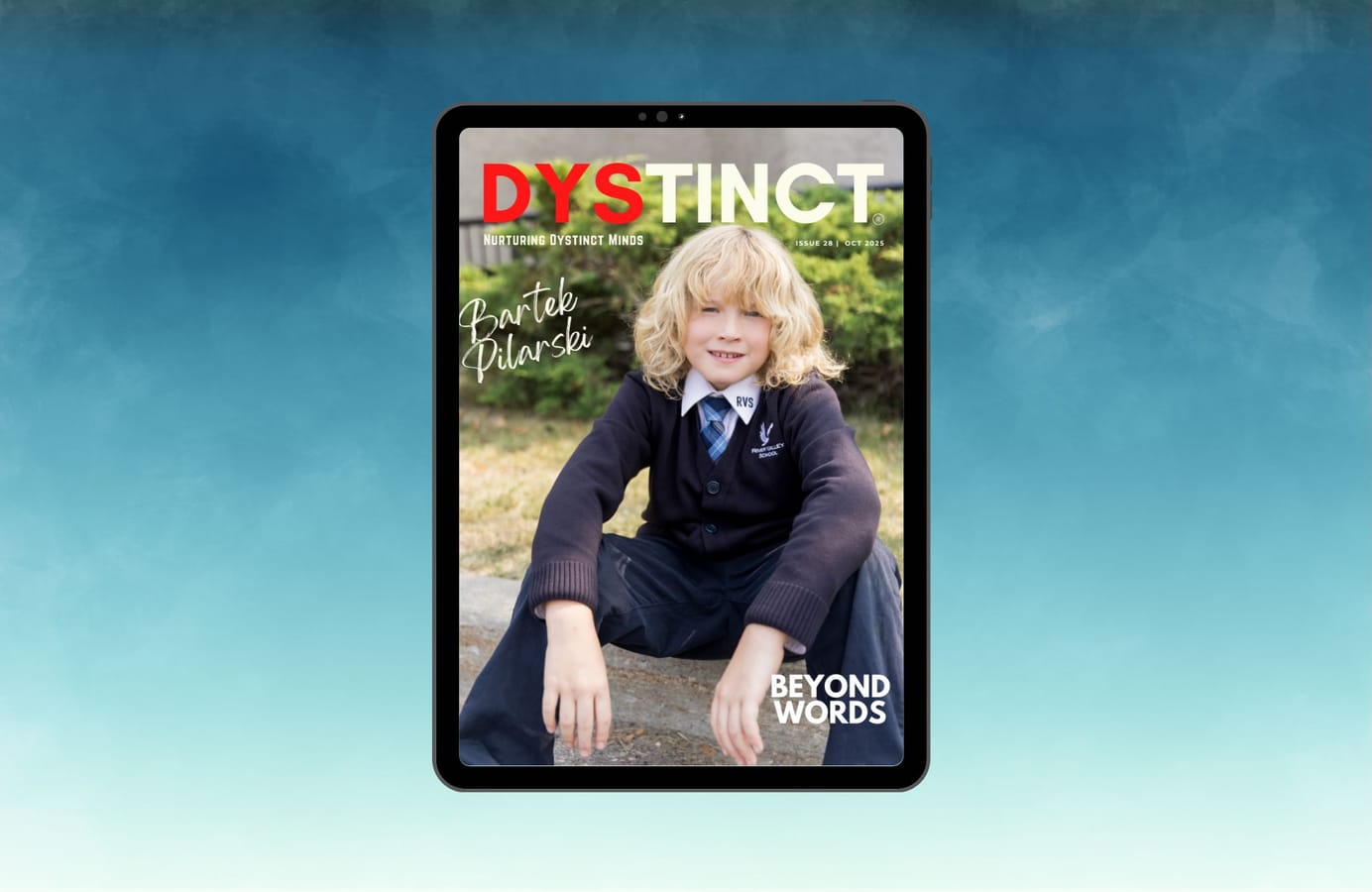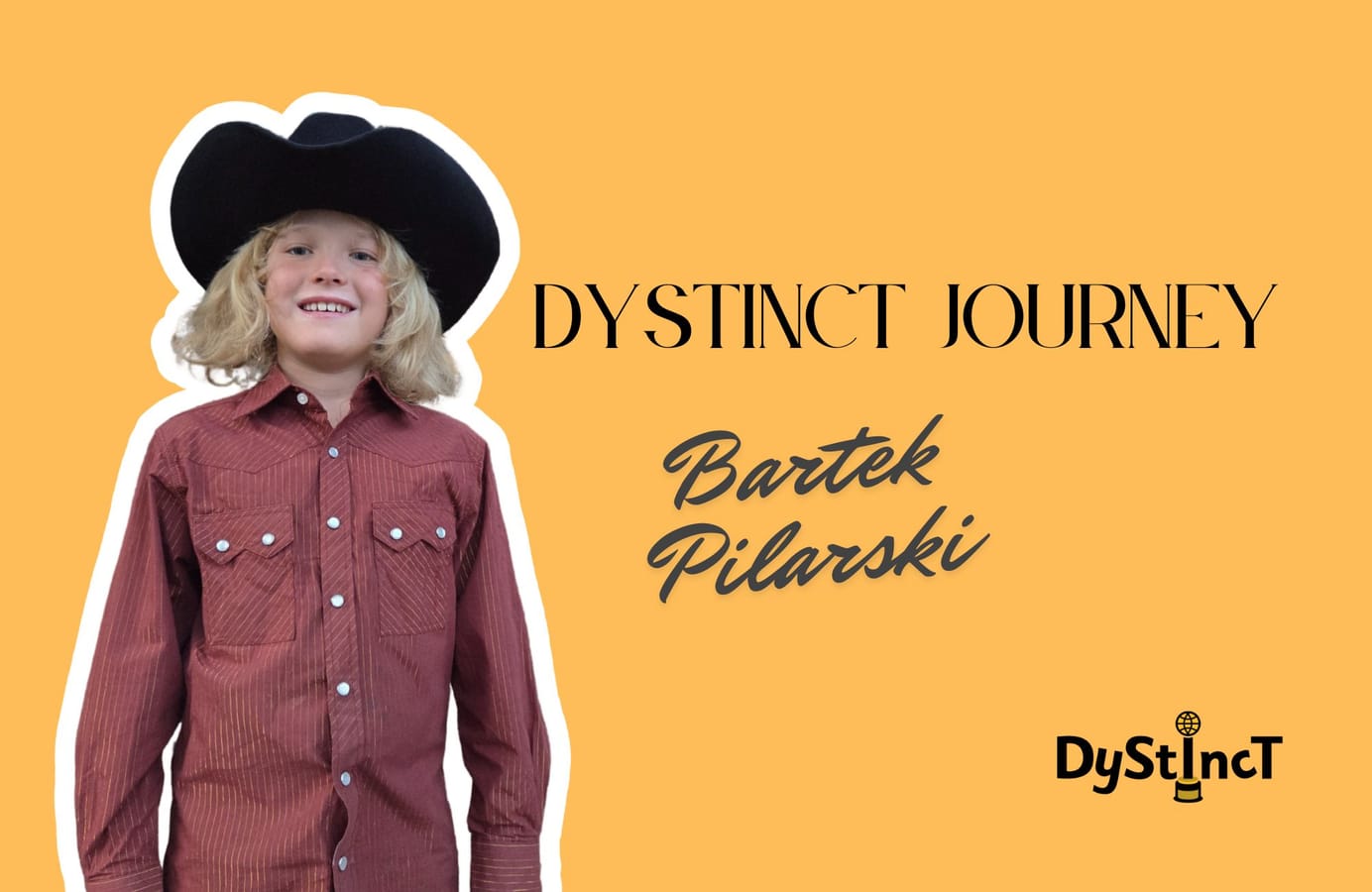Issue 02: March 2021 Dystinct Magazine
Dystinct Magazine's 2nd issue: March 2021 is available to download on Apple and Android devices. The issue covers inspirational stories from children and adults with learning difficulties (dyslexia, dysgraphia, dysgraphia and dyspraxia).
Table of Contents
- How to Access Dystinct Magazine
- On the Cover
- Topics covered in this issue (includes links to access on website)
- Editor's Note
- Extracts from the Magazine
How To Access Dystinct Magazine
👉 Read further below to access all the content of the magazine on the website layout. Check links to each article in Topics covered in this issue
The magazine can be accessed on your mobile and tablet devices.
👉 Apple App Store - iOS iPad/iPhone
👉 Google Play Store - Android devices
👉 Libby Apple iOS | Google Android
👉 Zinio Newstand | MagsFast Newstand | Magzter Newstand
On The Cover

On the cover is Amber Dunbar.
TOPICS COVERED IN THIS ISSUE
The March 2021 issue of Dystinct Magazine brings to you:
14-year-old Jacquelyn from Maine, USA, talks of her battles of fighting for her rights within a flawed system that isn’t designed for children with learning difficulties.
Dr. Kelli Sandman-Hurley outlines information on ways to prepare to advocate for children whose parents suspect they have dyslexia.
Hilary Laxson talks of the struggles specific to military children with dyslexia in the US and how it can be alleviated.
Susan Miller talks about the importance of teaching handwriting to children and shares the latest research on why handwriting practice is crucial to a child’s developing brain.
The story of 14-year-old Phoebe McAllan, a sportsperson and dyslexia advocate who puts herself out there to advocate for herself and her classmates who struggle with learning.
The story of how warrior mum Heidi Gregory set up the Dyslexia Support Victoria Facebook group and how the initiative now provides evidence-based support to over 6000 families in Victoria, Australia.
A comprehensive article on the impact, symptoms, assessment, types, and intervention for DCD by Dr. Angela Webb, an advisory board member of the Dyspraxia UK foundation.
Attorney and social activist, turned dyslexia advocate Diana talks of her experience raising her two boys with dyslexia and other learning difficulties.
Dr. Kerry Hempenstall presents a critical evaluation of research to respond to the question ‘does remediation cost our children their creative abilities?’
The story of 12-year-old Lulu from Groesbeck, USA, who has a remarkably long list of achievements and a very positive attitude.
Antonia draws attention to the differences in providing intervention for adults compared to children, their unmet needs, and ways to make remediation adult friendly.
The story of self-taught animator and YouTuber Amber Dunbar, who creates impressive animations from scratch at just 13 years old. Also covered in the story is her mum Kim Dunbar who trained to become an MSL therapist to help her daughter.
Technology tools and strategies to help students keep up with the changing learning landscape.
Peggy’s insights into raising confident and resilient children who are empowered enough to advocate for themselves.
The story of how a dyslexic child from the ’60s found her way into filmmaking and established an excellent Social-Emotional Learning platform involving child actors and a crew who are dyslexic themselves.
The story of Emma Ruskin, the girl with dyslexia and dyscalculia who has just been accepted into medical school at UCLA and her new initiative to help connect dyslexic children worldwide.
Michael discusses the evidence behind the usefulness of games to make math engaging and how he set up his hit blog over the lockdown.
The story of 14-year-old entrepreneur Serena who is trying to raise funds to pay her band fees next year.
The story of the successful movie maker and animator Max Strebel, the boy with an amazingly positive attitude who volunteered to read out loud in class.
Editor's Note
We’ve had an overwhelming response from parents, educators, and organisations to our first issue. I’m incredibly thankful to all the lovely people who got in touch with me with their feedback and the support you’ve shown us.
This issue is special to me as we managed to realise one of our dreams of having children involved in the production of the magazine. We have had some amazingly talented young artists with learning difficulties help illustrate the articles contributed by experts. Their creative drawings add charm to this issue. I hope to have more children involved in many other capacities in the coming issues. The wheels are in motion for what we started as a desire to make a small difference.
I personally enjoyed chatting with all the fabulous individuals, especially the kids who have kindly shared their journeys with us in the hopes of helping all our children find some comfort during these challenging years. I also hope you will benefit from the advice that leading experts have shared here.
Both person first and diagnosis first language has been used throughout this magazine to be sensitive to people who feel passionately about either way of addressing individuals.
I hope you enjoy reading this issue and all the specialist content covered.
Please get in touch with me if you have any feedback, ideas, or stories to share to change the narrative surrounding learning disabilities.
Thanks
Zahra Nawaz Shafeeq
Extracts from the Magazine










